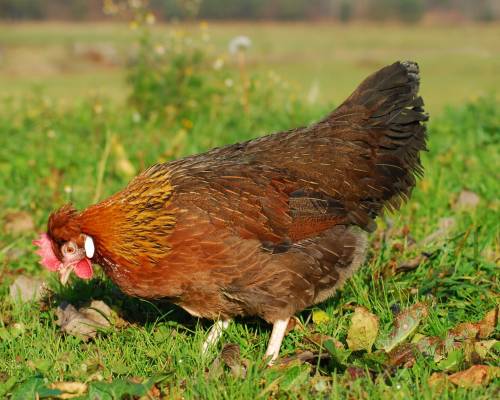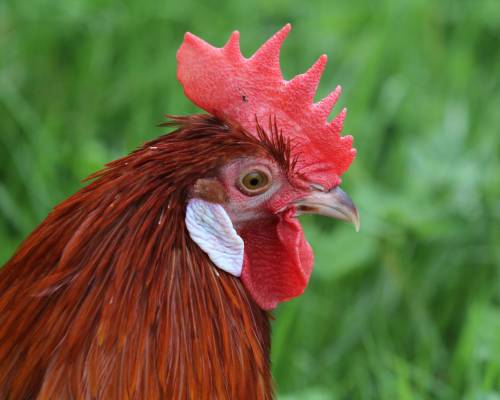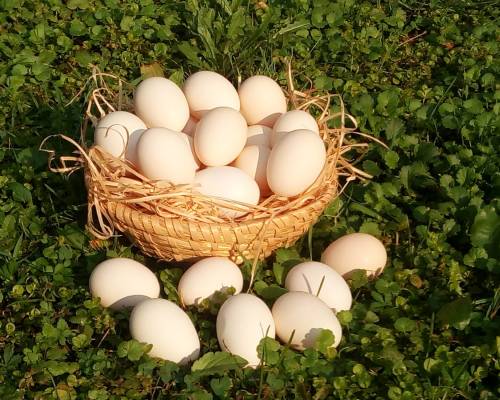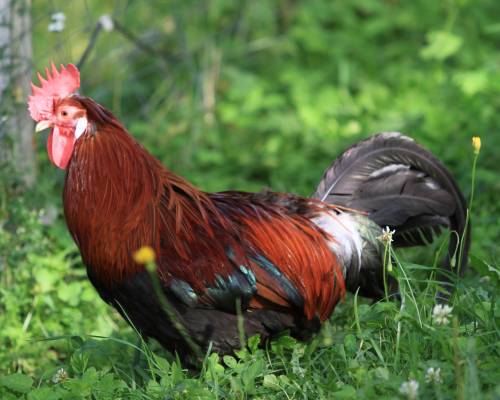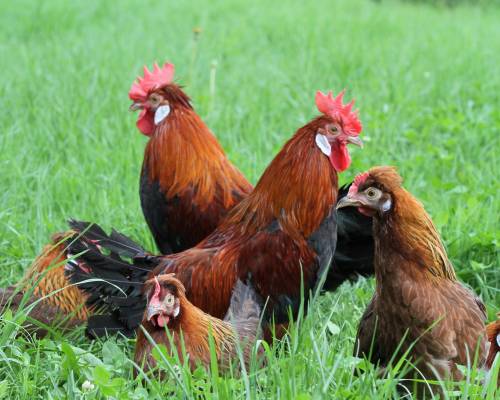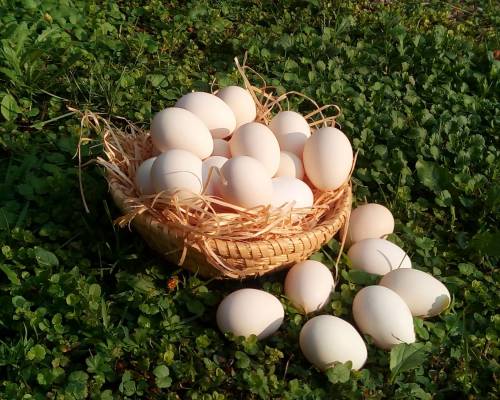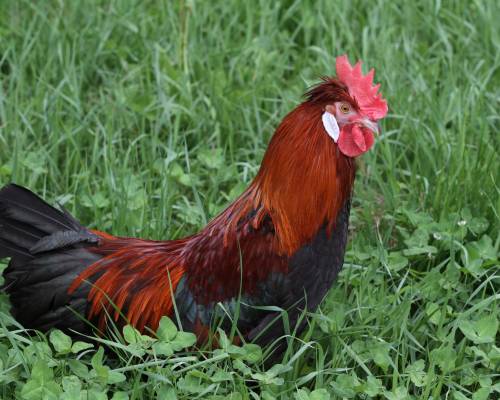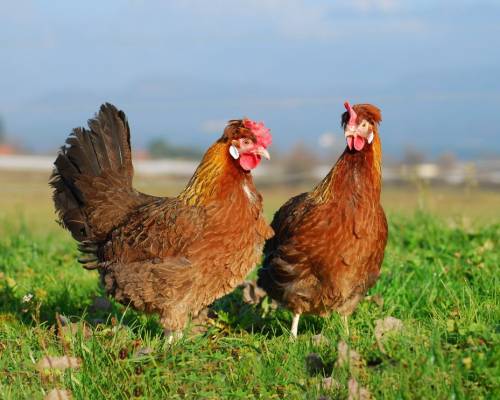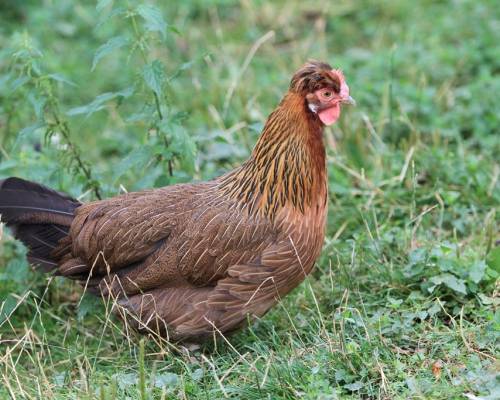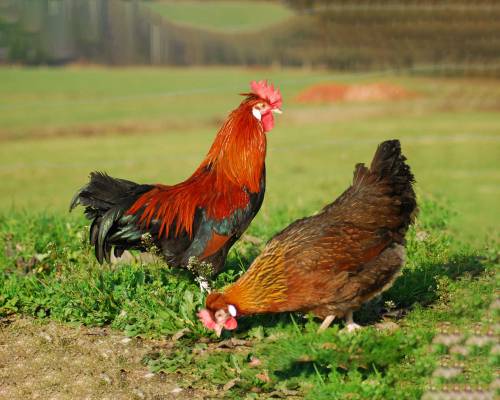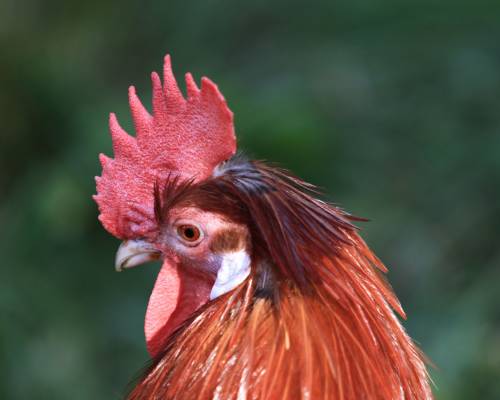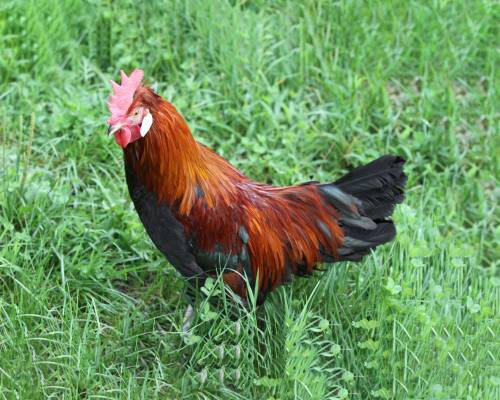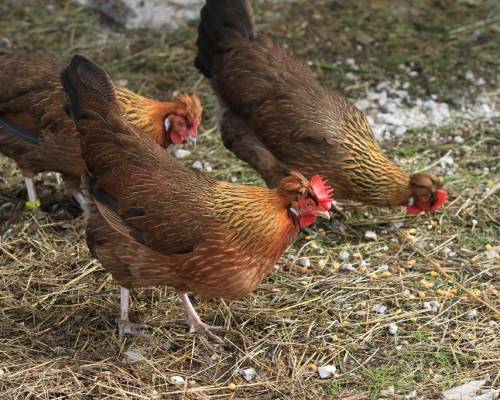Styrian Hen
Origin and Development of the Breed
The Styrian Hen, known as “štajerska kokoš" in Slovenian, is an indigenous chicken breed from Slovenia and the Austrian state of Styria. Historically, it was widespread across Alpine regions from the Danube to the Adriatic Sea and into the Pannonian Plain. Its primary homeland is identified as the southern part of Austrian Styria and the area between the Mur and Sava rivers in Slovenian Styria. Several color variants existed, including red-brown, wheat-brown, and barred. In 1902, a breed standard was established, naming the breed “štajerka." In Slovenia, predominantly the partridge-colored (jerebičasta) Styrian Hen has been preserved.
Breed Characteristics
The Styrian Hen is a light-type chicken with a strong instinct for foraging. A distinctive feature is the crest of elongated feathers behind the comb, which is medium-sized, single, and upright. The earlobes are small and white. Legs are medium-length and white. Roosters have a brown-red head, crest, neck, and saddle, with dark to brown-red shoulders and back, and black underparts. The edges of black wing feathers are brown. Hens exhibit black speckling with light stripes down the center of their feathers. Adult hens weigh between 1.8 to 2.2 kg, while roosters range from 2.5 to 3.0 kg.
Breed Distribution and Endangerment
In recent years, the population of the Styrian Hen has been increasing, thanks to efforts by recognized breeding organizations, such as the Biotechnical Faculty’s Department of Animal Science, and dedicated breeders committed to raising quality birds. Many hobbyists maintain small, unregistered flocks. Despite this growth, the Styrian Hen remains endangered, with an estimated population of around 2,200 animals.
Did you know...
...records from 1352 mention Styrian capons being served at the "Pri nebeških
vrtnaricah" monastery in Vienna due to their tender and flavorful meat
...historically, the Styrian Hen has been known by various names, including
"štajerka," "staroštajerka," "celjska kokoš,""domača čopka".
Breed Purpose and Products
The primary products of the Styrian Hen are table eggs, with annual production ranging from 130 to 160 eggs, and in some flocks up to 200 eggs, each averaging around 55 grams. The eggs have a characteristic white (light) shell. The breed is well-suited for farmyards, where it often lays more eggs than in commercial farming systems. Interest in caponizing (castrating roosters for meat production) has been growing; however, compared to other breeds or hybrids, there is less demand for capons of the partridge-colored Styrian Hen due to their slower growth rates. It’s important to note that the partridge-colored Styrian Hen is a light or egg-laying type of chicken.


